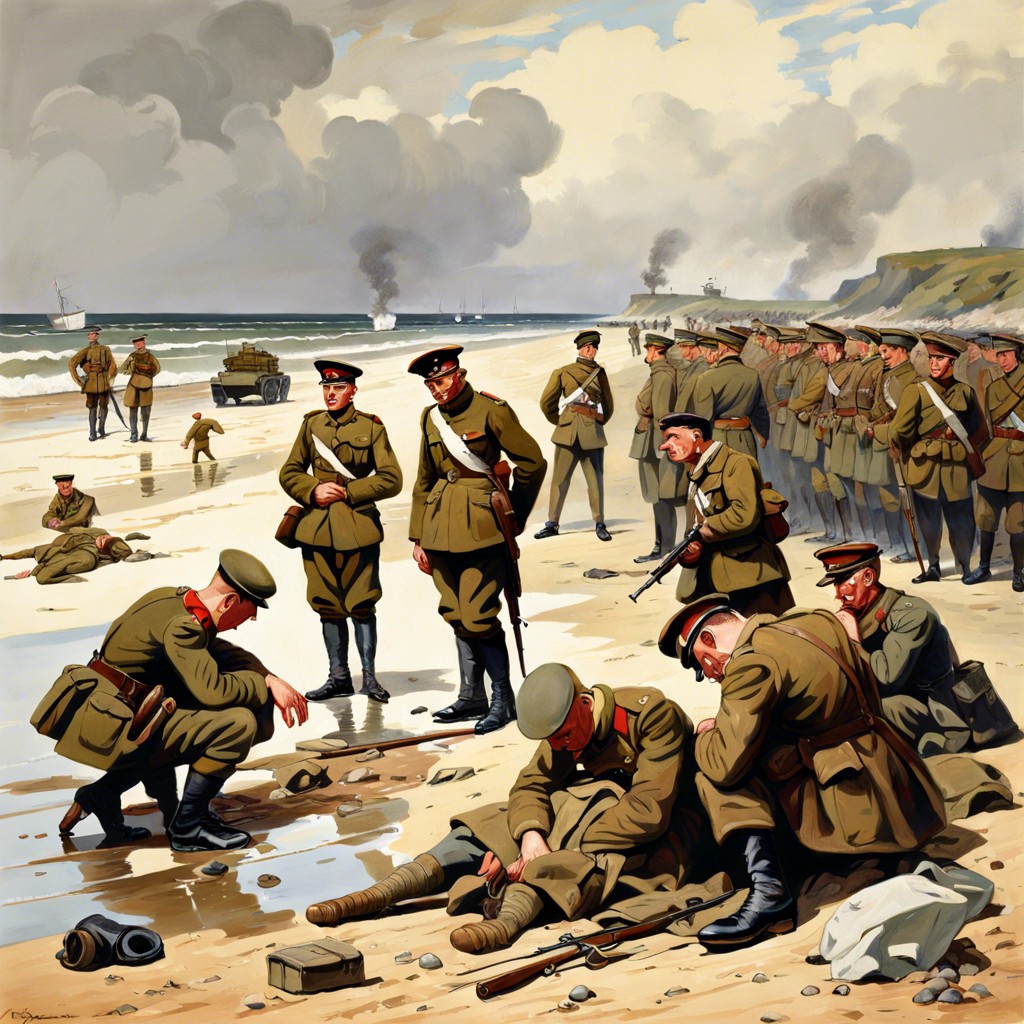Learn how history, culture, and borders might have been altered if ancient Rome had managed to conquer Germania.
Imagine a world where the eagle of Rome soars triumphantly over the dense forests of Germania, reshaping history as we know it. What politically charged drama unfolds, what cultures merge in the crucible of Romanization, and how does the economic landscape transform under these new rulers? From revamped military strategies to the cascading effects on European history, explore how a Roman-conquered Germania could have changed the game forever. Buckle up; we’re taking a chariot ride through an alternate reality.
Key takeaways:
- Roman governance replaces tribal leaders with Latin laws and bureaucracy.
- Germanic tribes adapt to Roman culture, education, language, and cuisine.
- Roman exploitation boosts agriculture, mining, and trade in Germania.
- Military strategy shifts, alliances form, forts line the extended borders.
- Roman-Germanic fusion alters art, extends Roman rule, possibly reshapes Europe.
Political Realignment and Governance in Germania

Imagine a world where Roman officials replaced tribal chieftains. First, expect roads and roadsigns all in Latin. Germanic tribes would face Roman laws, like it or not. No more “my axe decides justice” but rather Roman courts dictating fates. This new governance would mean taxes, too. Yes, taxes and more bureaucrats than you can shake a javelin at!
Local leaders, once fierce warriors, might find themselves dressed in togas and handling disputes over cattle rather than conquering neighbors. Provincial governors would hold power, attempting to forge a sense of unity. It wouldn’t be Roman rule without a sprinkle of paperwork, Senate decrees, and marble statues, right?
Finally, expect a clash of politics. Tribal loyalty versus Roman allegiance would create a tug of war over governance. Balancing testudo formations with tribal councils? Yes, it’s like mixing oil and aqueducts, but the blend could potentially reshape the essence of leadership in the region.
Cultural Integration and Romanization of Germanic Tribes
Imagine Germania’s wild and woolly tribes suddenly swap their beer steins for wine amphoras and their longhouses for Roman villas. The integration would be a wild tapestry of cultural mash-ups.
First, picture Germanic chieftains trading in their fur-lined cloaks for togas. Rome wasn’t just about gladiators and grand speeches; it was heavy on social status and public baths. The tribes might find themselves soaking beside senators after a hard day of, well, whatever Romanized tribes did—probably discussing the finer points of Latin verse.
Iron nails and wooden plows would give way to sophisticated Roman engineering. Roads, aqueducts, and amphitheaters would spring up in forests once ruled by druids. Germanic artisans might adopt Roman aesthetics, meaning an explosion of hybrid art styles.
Education would take a sharp turn. Roman schooling would introduce young Germanics to philosophy, rhetoric, and the oh-so-thrilling works of Cicero. A far cry from the oral traditions or simple rune carvings they might be used to.
Language, too, would blend. Latin phrases would slip into everyday speech faster than you can say “veni, vidi, vici.” Don’t be surprised if you overheard romanized Germans groaning about their tax burdens—in Latin!
Food and festivals would see an overhaul. Think less bratwurst and more olives and stuffed dormice. Germanic winter solstice? Move over, here comes the Roman Saturnalia, complete with lavish feasts and questionable toga choices.
The cultural stew that would result from such a territorial tango would be both fascinating and deliciously unpredictable.
Economic Impact and Resource Exploitation
Imagine Roman merchants swooping into Germania like kids in a candy store. Tantalized by untouched forests, fertile lands, and mineral-rich mountains, they’d transform these resources into wealth. Think Roman villas sprouting in the Germanic countryside, like mushrooms after a rainstorm.
Agriculture would flourish with Roman techniques. Goodbye, rudimentary farming; hello, bumper grape harvests and juicy wheat crops! Germania could become the breadbasket of the northern empire, exporting grains and wines back to Rome, making both regions prosper.
Don’t forget mining. Germania’s underutilized mineral resources would be a goldmine – pun intended. Gold, silver, and iron ore would fuel Roman industry, making weapons, coins, and luxury goods, filling imperial coffers.
Imagine the local Germanic economy supercharged with Roman engineering. Roads, bridges, and aqueducts would connect previously isolated villages, turning them into bustling trade centers. This isn’t just about Roman gain; it’s a win-win if you like commerce and shiny things.
Alright, maybe the Romans might also exploit a teensy bit too. Taxation and coerced labor aren’t exactly minor details. But hey, all empires lay the hammer down occasionally, right?
Military Changes and Frontier Defense
Imagine Roman legions patrolling the dense forests of Germania instead of the familiar Mediterranean shores. The rugged terrain would surely challenge their traditional strategies. They’d need to innovate, maybe even forge alliances with some local tribes. Picture Roman roads cutting through the wilderness— these logistical marvels would facilitate rapid troop movements and supply lines.
Germanic warriors, known for their fierce resistance, could be recruited as auxiliary forces. They’d bring their unique skills, adding diversity to the Roman military machine. And let’s not forget the walls— Rome loved walls. A new line of forts would likely spring up along the extended borders, keeping an ever-watchful eye on any potential uprising.
Military innovations and adaptations would create a fusion of Roman discipline with Germanic tenacity. This blend might have birthed a new kind of military might, forever altering the landscape of European conflict.
Long-term Consequences On European History
Roman rule in Germania would have dominoed across European history in ways hard to fathom. First, the cultural blend of Roman and Germanic ways could have created a unique society, influencing art, language, and philosophy. Imagine Caesar in lederhosen, if you will.
Next up, the power dynamics. Without the constant threat from the north, Rome might have extended its empire even further, possibly delaying its decline. This expansionist approach could see the Mongols learning Latin just to keep up.
As for the Middle Ages, forget the Holy Roman Empire—a contradictory name if there ever was one. We might have seen a united Europe much earlier, sparing us the Game of Thrones-style chaos among feudal lords.
Moreover, who could ignore the tech implications? Roman engineering married with Germanic innovation could have jump-started the Industrial Revolution centuries earlier. Picture aqueducts and autobahns coexisting, revolutionizing trade and travel.
Lastly, the spread of Christianity could have taken a different route. With Germania integrated early, religious and cultural uniformity might have fostered a more cohesive spiritual landscape, potentially avoiding bloody religious wars.
Quite the alternate reality, wouldn’t you say?




